Chainsaw Chain Won’t Spin Freely
Chainsaws have become the go-to tool for many professionals and hobbyists. They are very versatile tools that can be used in a variety of settings, including forestry, construction, landscaping, and casual tasks such as bucking firewood.
One of the reasons they have become popular is the power they possess. On top of that, their ability to easily cut through logs, timber, branches, and tree trunks is admirable. However, there are many instances when the chainsaw chain won’t spin freely.
This could arise from several issues. For example, a dirty clutch, worn-out sprockets, damaged chain, engine problems, and tension problems In addition, chainsaws with chains that don’t spin freely are not safe to use.
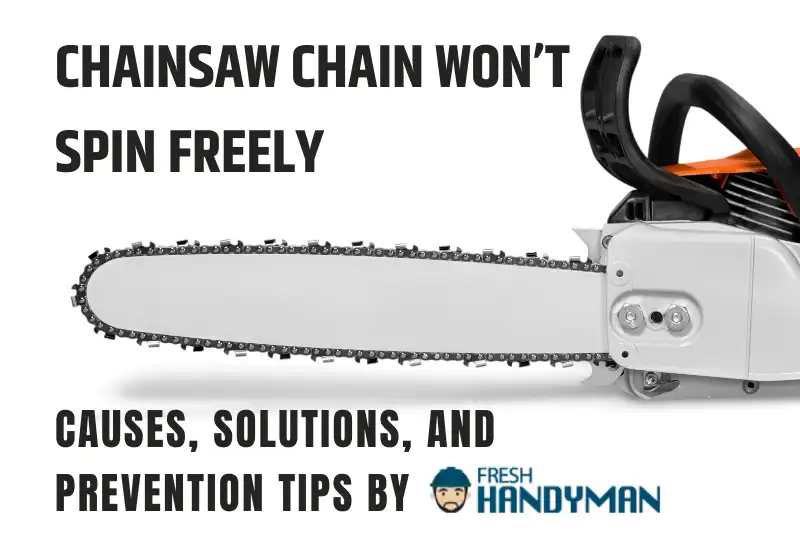
In this article, I will explain more about these problems and how to diagnose and fix them. I will also discuss how you maintain your machine in order to extend its life. So, please continue reading.
Why Won’t Your Chainsaw Chain Spin Freely?
A chainsaw chain not spinning freely can be very frustrating, especially when you’re trying to get some work done. Below are some of the causes and their solutions:
| Problems | Quick Fixes |
|---|---|
| Dull or damaged chain | Sharpen or replace chain |
| Tension Problems | Adjust the tension of the chain |
| Dirty or Damaged clutch | Clean the clutch or replace it with a new one |
| Worn-out sprockets | Replace with new ones |
| Chainsaw Brake Engaged | Disengage the chain brake, reset chain brake system |
- Dull or Damaged Chain
One of the main reasons your chainsaw stopped spinning freely is that it might be dull or damaged. The chain is an indispensable component of your saw since it carries out the cutting. However, when it is too dull or damaged, the saw may struggle to turn it.
This happens when you frequently encounter hard objects in your work environment, such as nails and stones. It could also be due to prolonged use, which gradually dulls it.
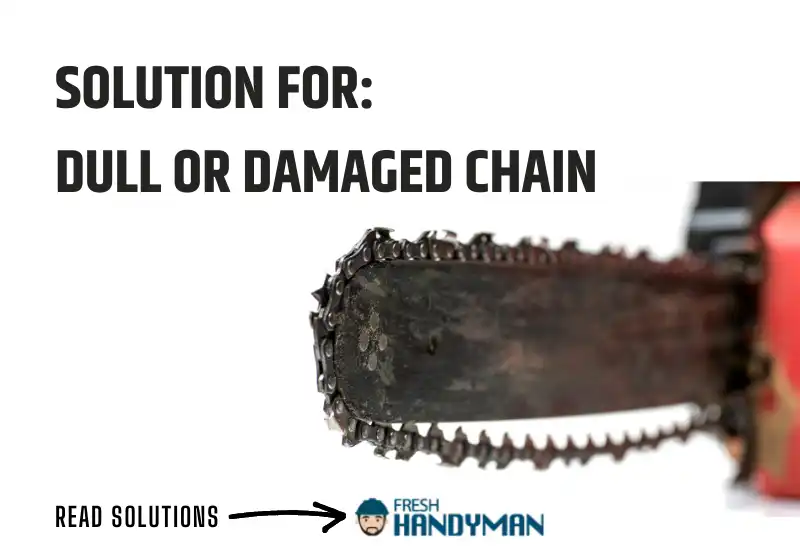
Solution: Sharpen or Replace the Chain
The first thing you should do is sharpen your chainsaw chain to restore the sharpness of each tooth. I would advise you to use a chainsaw file guide to file the teeth uniformly. It will also help you to maintain a similar depth and angle when filing.
Secondly, you should remove the chain from the bar and inspect it for damage. If you find out the chain is too damaged, then the only solution remaining is to replace it with a new one.
- Tension Problems
An improperly tensioned chain cannot turn freely. Additionally, it might end up damaging other components, such as the clutch. When you overtighten the chain, you restrict the blade from moving freely.
On the other hand, when it is too loose, the chainsaw chain will come off or sag. This will also make it hard for the blade to spin freely when you engage the throttle.
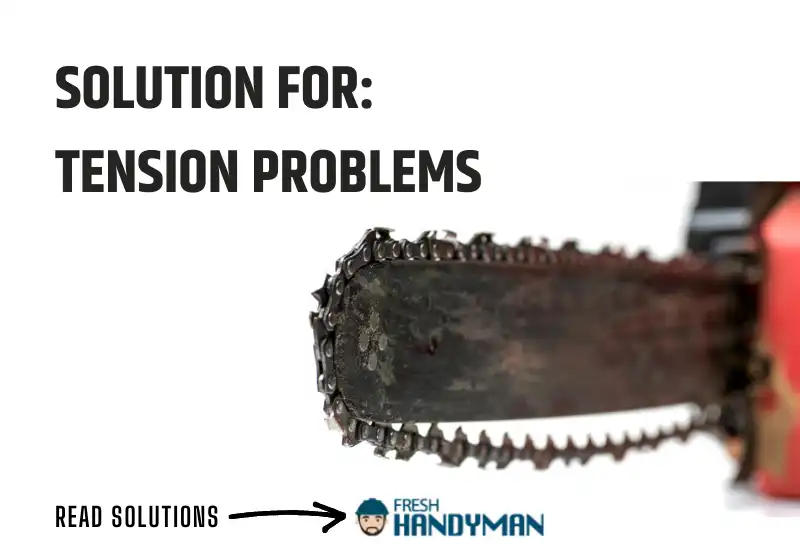
Solution: Adjust the Chain’s Tension
To resolve this issue, adjust the tension of your chain. It should firmly grip the bar but still have enough clearance to spin. Stihl saws have a side-access tensioning system that allows you to adjust the tension easily.
Just take out the spark plug and unlock the chain brake. Unlock the retaining nuts of the clutch housing. Next, while holding the tip of the bar up, lock or unlock the tensioning screw to increase or reduce the tension in the chain, respectively.
- Dirty or Damaged Clutch
If your engine is running normally but your chainsaw is still not spinning, then your clutch may be the issue. The clutch is tasked with initiating the rotation of the chain once the engine is up and running. It may fail to engage completely if it is dirty or damaged. In turn, this prevents the chain from rotating.
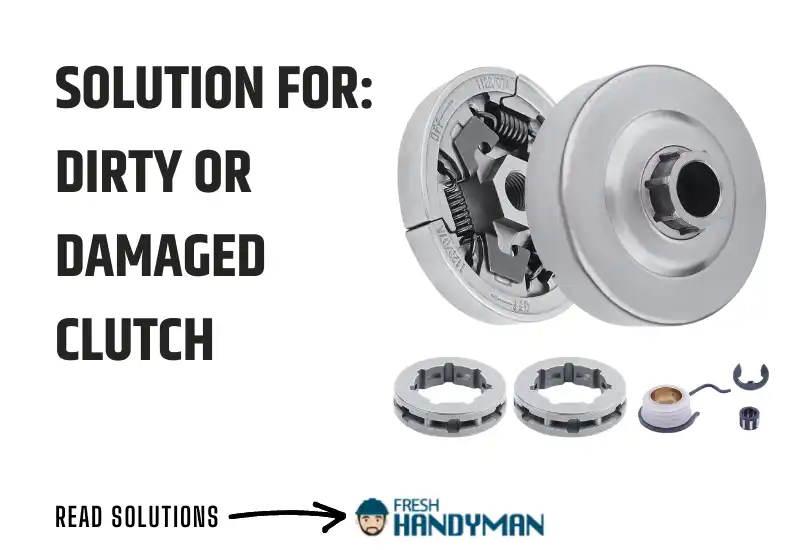
Solution: Clean or Replace Clutch
You should first remove the clutch housing and clean it thoroughly to get rid of any debris that might be stuck there, preventing it from spinning. If that doesn’t work, then it might be time to replace it.
Before carrying out any replacement, you should turn off your engine by taking out the spark plug and putting in a piston stop. After that, use a clutch wrench to take out the clutch. Screw a new one in place, and you will be good to go.
- Worn-Out Sprocket
The main purpose of the sprocket is to move the chain around the chainsaw bar as smoothly as possible. So, when the chainsaw chain won’t spin freely, there is a high likelihood that you have a worn chainsaw sprocket. Seek the help of a professional if you’re not familiar with fixing chainsaws.
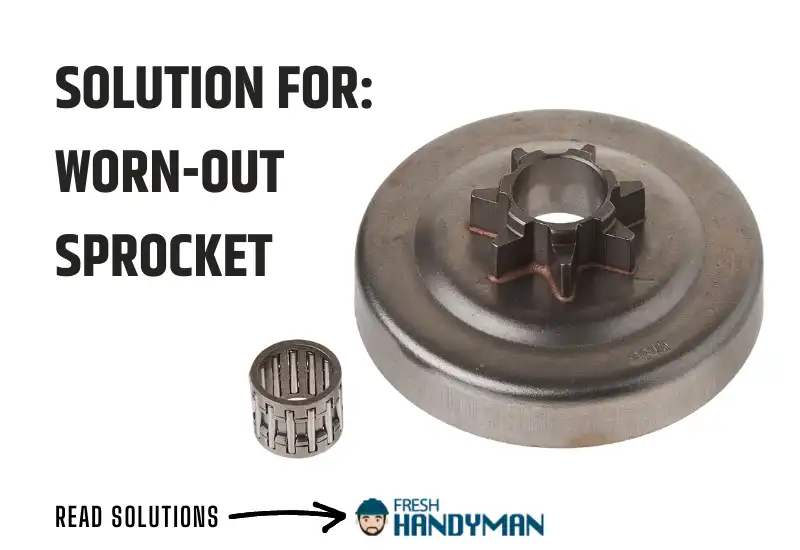
Solution: Replace Worn-Out Sprockets
Take out the clutch housing and unscrew the clutch to access the sprocket. In other chainsaws, the clutch housing and sprocket may be combined. Remove the sprocket and replace it with a new one. Reassemble the parts you’ve opened and test the machine.
I highly recommend you go through your chainsaw’s manual for better guidance on how to replace the sprocket or any other part. I can’t count the number of times it has come in handy for me.
- Engaged Chain Brake
There are numerous times I have tried to determine what was wrong with my chainsaw when the chain stopped spinning only to discover that I had engaged the chain brake.
The chain brake usually acts as a safety mechanism. It halts the chain’s rotation whenever you engage the chain accidentally or when it kicks back. So, if you’re revving up your machine but the chain brake is still activated, the chain will definitely fail to spin.
At times, the whole chain brake mechanism may fail completely, thus continuing to hold the bar and chain.
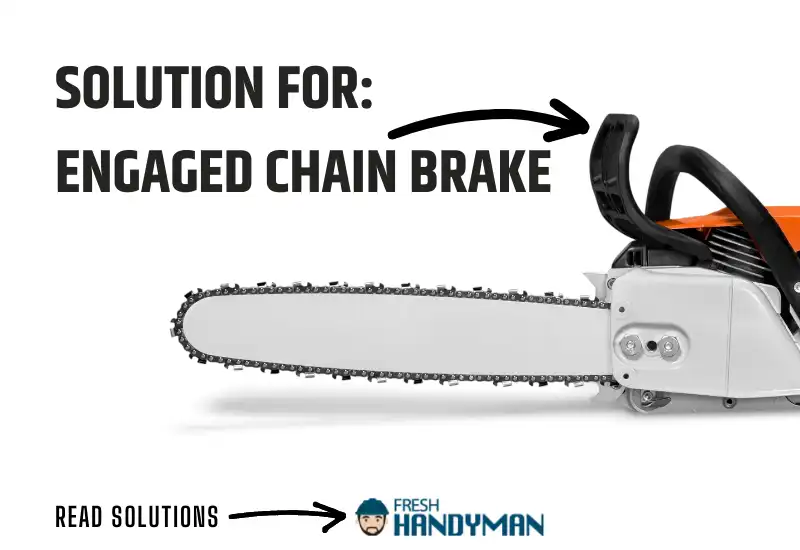
Solution: Disengage the chain brake
For Husqvarna saws, the chain brake handle will be placed near the chainsaw handle. Pull it back to disengage it and enable the normal rotation of the chain. If the chain brake mechanism has malfunctioned, just reset it.
You can do this by moving the brake handle to the engaged position. Then, reinstall the clutch cover and pull back the chain brake handle.
How to Diagnose the Problem
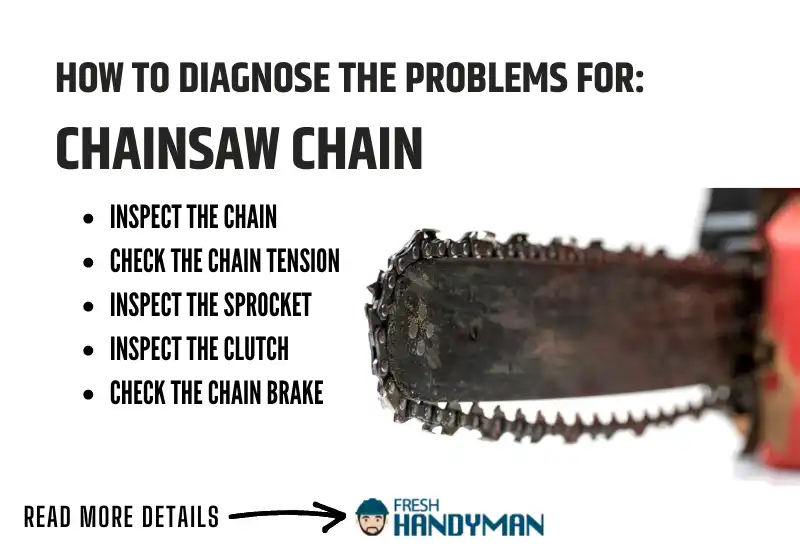
Diagnosing the issue that your chainsaw has might be the best way to find a potential fix. You can do this by inspecting the chainsaw and all its components. Here’s how to do it:
- Inspect the chain
Take the chain out and keenly examine it for damage. Check if the teeth have become dull so you can sharpen them. Also, inspect the chain drag, links, rails, and rivets for any damage that might prevent the saw from spinning.
- Check the chain tension
Next, you should check your chain tension. Pull the chain away from the bar, and if it doesn’t come off the bar at all, then it means that it is too tight. If the chain leaves a clearance of more than ¼ inch, then it is too loose and will need tightening.
- Inspect the sprocket
Unscrew the sprocket and examine if it is worn or damaged. Look for broken or bent teeth. Try to check if it is too worn out.
- Inspect the clutch
Check if the clutch is free from dust and debris that may clog it. Inspect the condition of the clutch shoes to see if they are worn out and might need replacement.
- Check the chain brake
Check if you engaged the chain brake accidentally or if the chain brake mechanism malfunctioned.
Read Also: 7 common Husqvarna 372XP problems
Chainsaw Maintenance
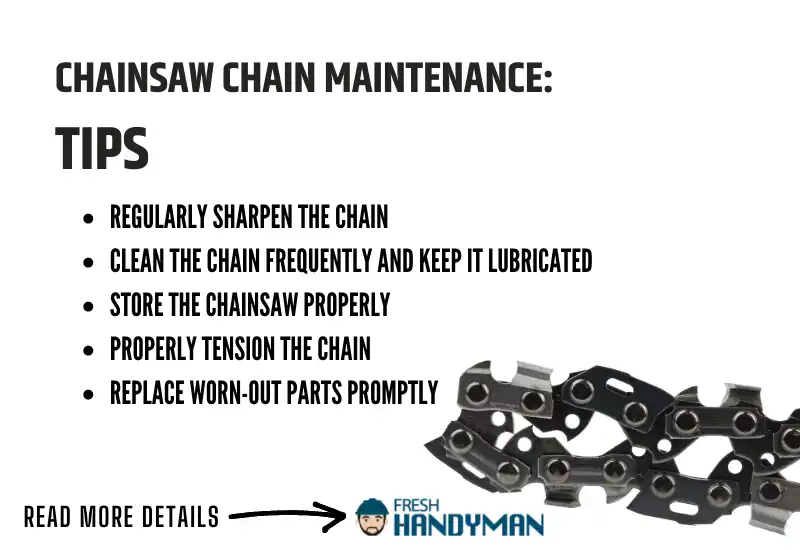
It is important to regularly maintain your chainsaw to prolong its lifespan. Here are some important tips that you can use:
- Regularly Sharpen the Chain
Keeping the chain sharp is key if you want the saw to always perform at its best level. Use a rotary grinder or a chainsaw file kit to restore a dull chain to its sharp state.
- Clean the Chain Frequently and Keep it Lubricated
It is very easy to ignore sawdust, wood chips, or any other debris that accumulates around the chain. However, they should be cleaned as soon as possible to prevent damage to the chain.
Additionally, you should keep the chain well-lubricated to prevent heat from building up due to friction. Finally, never leave the oil tank empty; it should always be filled.
- Store the Chainsaw Properly
Store the chain in a cool, dry place to avoid the buildup of dust and debris on its components. It will also help minimize the deterioration of the metal parts due to rusting.
- Properly Tension the Chain
Turn off the chainsaw and adjust the tension of the chain whenever you notice that it is too tight or loose. Always do this before every use.
- Replace worn-out parts promptly
If you notice any worn-out part, for example, a worn-out sprocket, clutch, chain, or air filter, replace it promptly. Leaving it there might end up doing more damage to the chain.
You might also be interested in: 9 Husqvarna 572XP problems
Safety Tips
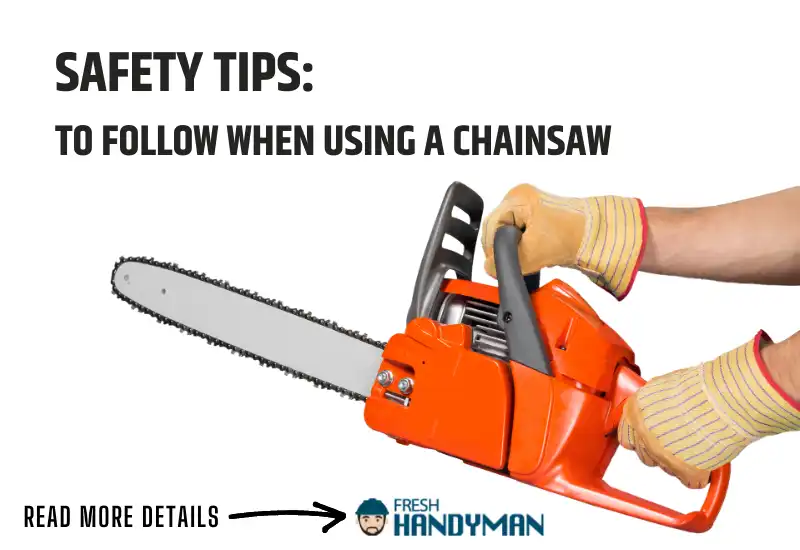
Here are some important safety tips to follow when using a chainsaw:
- Do not operate the saw without wearing personal protective equipment such as safety glasses, safety boots, body belts, helmets, and leather gloves.
- Handle the chainsaw using both of your hands to prevent it from slipping.
- Always engage the chain brake as soon as you stop operating the saw.
- Move at least 10 feet away from the point where you refueled your machine before revving it.
- Ensure that the chain is properly tensioned before starting the saw.
- Get rid of hard materials such as nails, stones, or screws from your work environment or from the wood you intend to cut.
- Use the correct posture for better balance and comfort. Your feet should be shoulder-width apart, and you shouldn’t arch your back.
The Bottom Line
Hopefully, you now know the main reasons why your chainsaw chain won’t spin freely. You should always start by diagnosing the issue to determine the appropriate method of fixing it and getting your chainsaw to work properly again.
I would advise you to use your chainsaw properly and regularly maintain it. This will prevent all these issues from occurring in the first place.